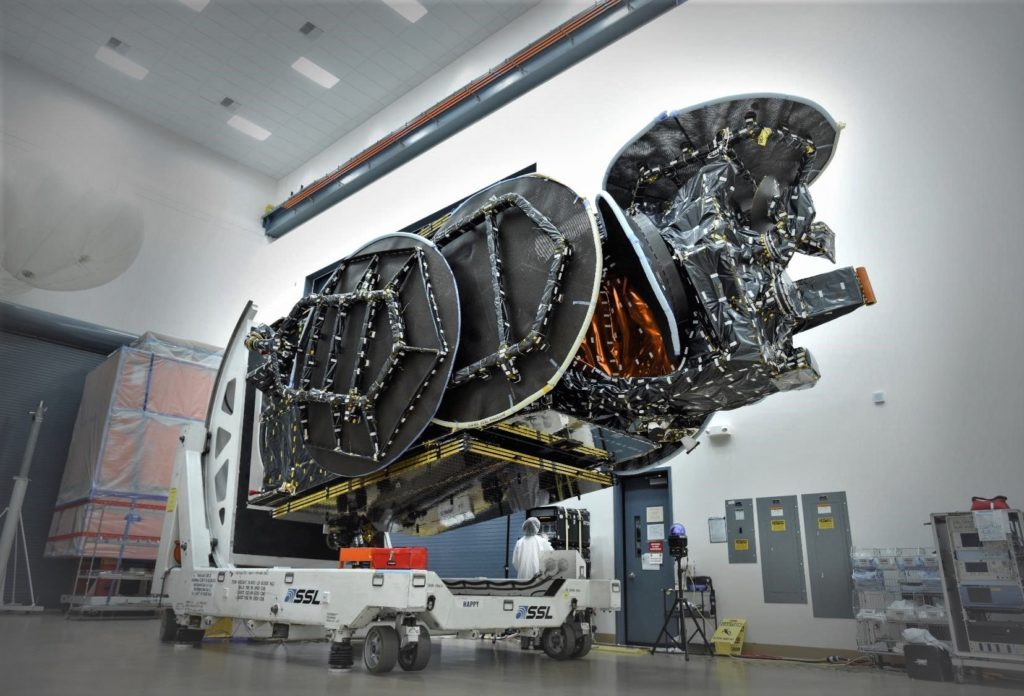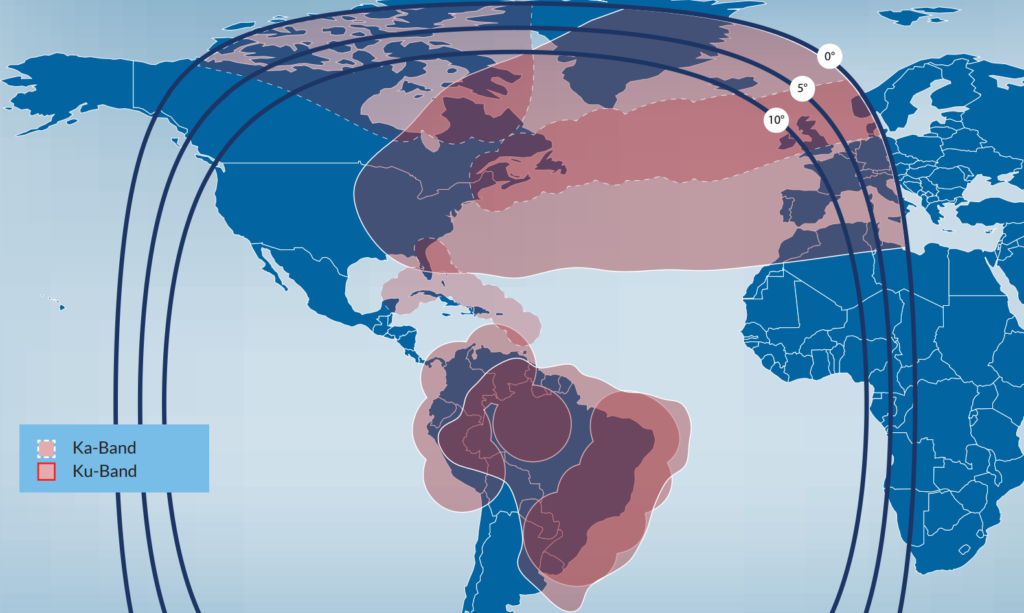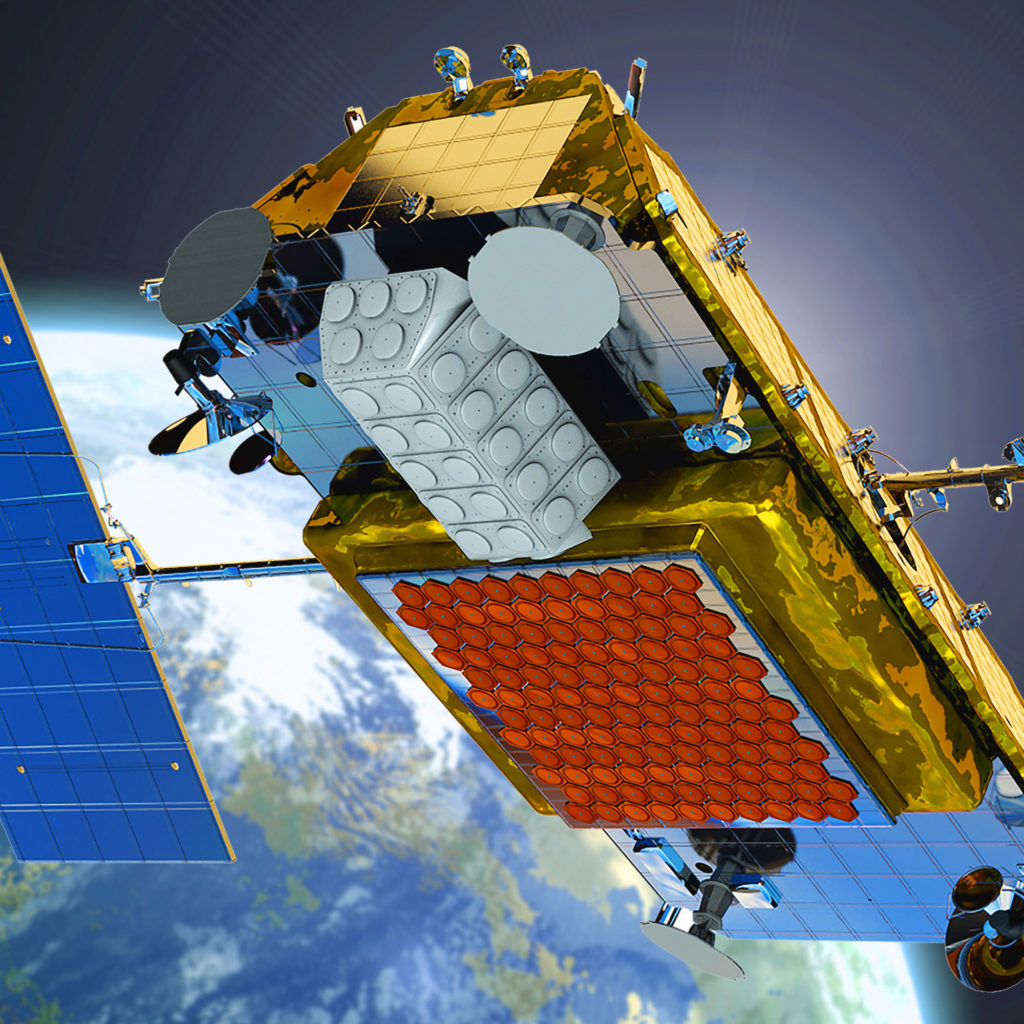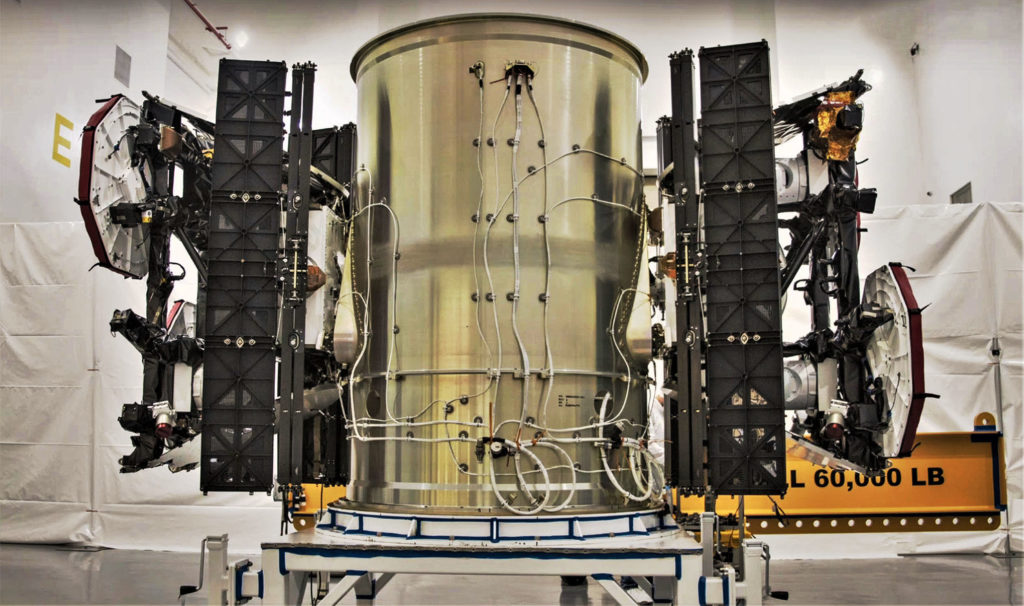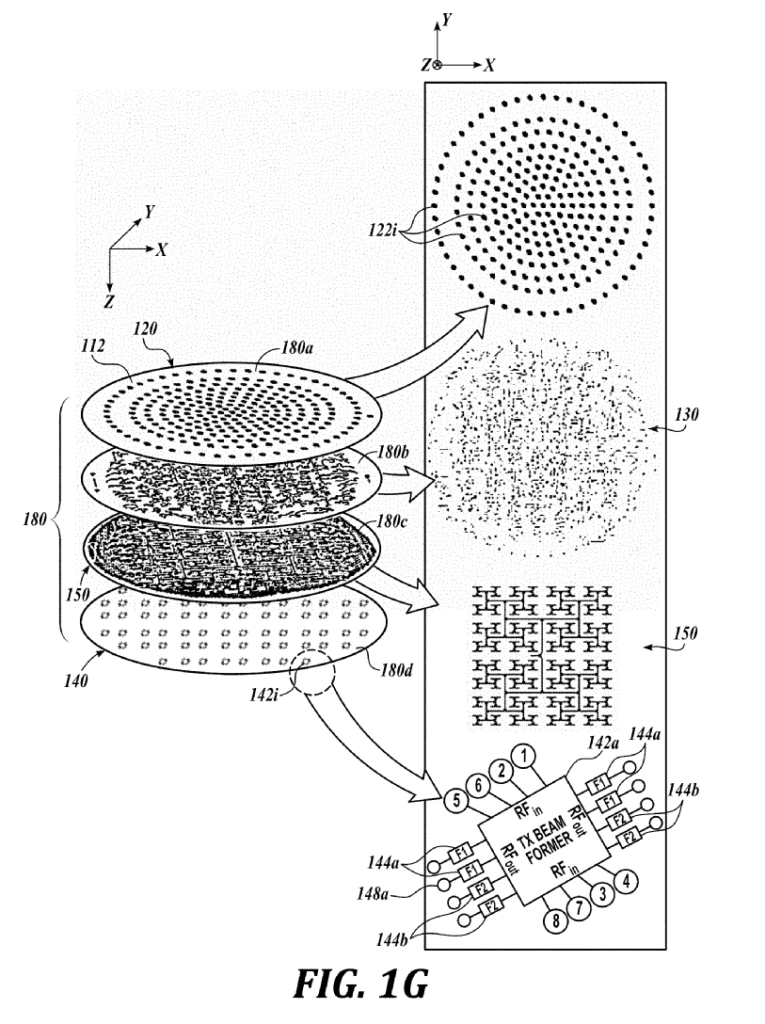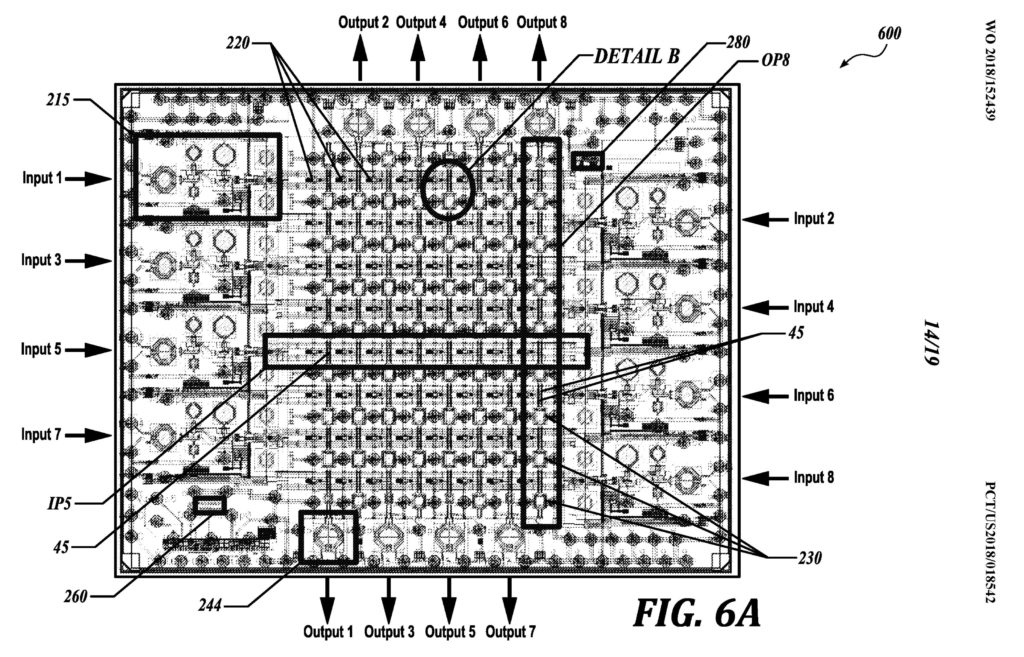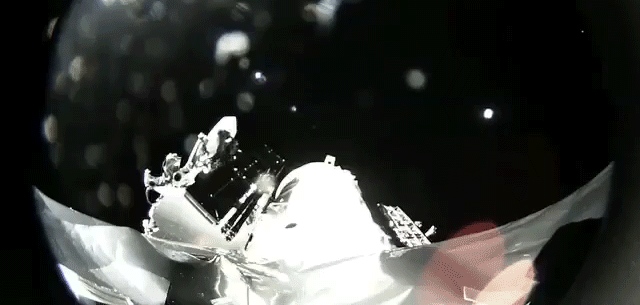

News
SpaceX board member says Starlink prototype satellites “are working wonderfully”
Speaking in a Satellite Innovation 2018 keynote, long-time SpaceX investor and board member Steve Jurvetson made a quiet but significant comment about the company’s Starlink satellite constellation efforts, stating that the first two prototype spacecraft – currently in orbit – “are working wonderfully.”
Standing in contrast to recent speculation that SpaceX’s Starlink project had experienced major failures with on-orbit hardware, Jurvetson may be a biased source but still has a major vested interest in SpaceX’s long-term success – supporting billions dumped into a satellite constellation with no real returns in sight would serve to seriously harm his significant investments in the company.
He would say that? Maybe, but @dfjsteve Jurvetson, early @SpaceX & @planet investor, told Satellite Innovation conference Oct 10, regarding SpaceX's two Starlink test sats launched in February: pic.twitter.com/WHzJlPUEPA
— Peter B. de Selding (@pbdes) October 12, 2018
Perhaps the most trustworthy source of SpaceX information outside of the company itself, Jurvetson expressed considerable confidence in SpaceX’s Starlink achievements thus far.
“I personally think SpaceX is in the lead [with Ku- and Ka-band phased arrays that could make (global LEO satellite broadband) possible] … Tintin 1 and 2 [are working wonderfully].” – Steve Jurvetson, Satellite Innovation 2018
Previously discussed on Teslarati, SpaceX’s growing experience with phased array antennas is undoubtedly a boon for the company’s proposed Starlink internet constellation, just one of several companies actively pursuing the increasingly competitive low Earth orbit (LEO) satellite broadband market. Fundamentally, phased array antennas will eventually take over nearly all multipurpose orbital communications thanks to the sheer simplicity and potential technical superiority of the technology.
Phased array antennas get their name from the fact that they have no moving parts – rather than moving a physical dish or angling dedicated ‘beams’, phased arrays actively use signal interference to very precisely shape, direct, and regulate line-of-sight communications beams. Currently quite immature, the draw of the technology is the sheer simplicity and reliability of antennas that require no moving parts, eliminating a major mode of failure and the inherent physical limitations of current antenna tech. Without something like phased arrays, LEO communications satellites would struggle to accurately and reliably track ground stations and gateways while traveling multiple kilometers per second.
- Traditional geostationary commsats like Telstar 19V feature dish-style antennas. The weird lumps and bumps on each dish are there by design, enabling the oddly specific coverage footprints seen to the right. (Telstar)
- Telstar 19V’s coverage map. Each coverage blob is there by design and is accomplished by physically shaping the antenna dish.
- LEO communications satellites like Iridium’s NEXT constellation feature totally flat panels of phased array antennas, capable of forming beams digitally. (Harris)
Large communications satellites in geostationary orbit do not face this problem. Thanks to their inherently fixed positions over ground targets (hence “geostationary“), designers and manufacturers have learned to quite literally mold each satellite’s on-orbit antennas to explicitly prioritize certain areas on the ground. This process tends to involve a prior determination of markets where demand for satellite communications is or will be highest, while also avoiding wasted coverage over areas with no need for it. However, once the antenna is launched, its beams are almost completely permanent. If markets change, the satellite simply cannot adapt.
Phased arrays, on the other hand, can almost entirely change where their many beams are directed, how much bandwidth is dedicated to certain locations, and all while accurately tracking moving targets with very few limitations. As a result, satellites with phased array antennas are sort of the communications jacks of all trades, capable of offering high-bandwidth connectivity to stationary user terminals, large ground stations, and moving vehicles simultaneously from with the same antenna array.
- SpaceX’s first two Starlink prototype satellites are pictured here before their inaugural launch, showing off a thoroughly utilitarian bus and several advanced components. (SpaceX)
- Patent diagrams like this show various subcomponents of a sandwiched phased array antenna, comprised of multiple printed circuit boards. (SpaceX)
- The technical term for this is “science rectangle.” In all seriousness, this is actually an extraordinary glimpse at custom silicon developed in-house at SpaceX, in this case a semiconductor die. (SpaceX)
- One of the first two prototype Starlink satellites separates from Falcon 9’s upper stage in February 2018. (SpaceX)
If SpaceX can perfect this, they will be the only company in the world to have done so on-orbit, while other satellite operators like Iridium have managed to build and launch low-bandwidth phased arrays but have yet to attempt to do so with the bands optimal for broadband internet or at a scale that might work for constellations of hundreds or even thousands of satellites. If Jurvetson is to be believed, SpaceX’s first foray into dedicated communications satellites and specialized hardware design and manufacturing has been a major success.
Even if the orbits of Tintin A and B do suggest that some difficulties were had with at least one satellite’s electric propulsion thrusters, it’s obvious that the experience and data derived from testing the vast majority of each satellite’s non-propulsion-related systems were invaluable and well worth the effort. Another group of prototypes will likely be launched according to Elon Musk, but that’s simply how SpaceX develops complex systems – build, launch, learn, and repeat.
For prompt updates, on-the-ground perspectives, and unique glimpses of SpaceX’s rocket recovery fleet check out our brand new LaunchPad and LandingZone newsletters!

Elon Musk
Elon Musk just said some crazy stuff about the Tesla Roadster

Elon Musk appeared on the Moonshots podcast with Peter Diamandis today to discuss AGI, U.S. vs. China, Tesla, and some other interesting topics, but there was some discussion about the upcoming unveiling of the Roadster, the company’s electric supercar that will arrive several years after it was initially slated for release.
Musk made some pretty amazing claims about the Roadster; we already know it is supposed to be lightning-fast and could even hover, if Tesla gets everything to happen the way it wants to. However, the car has some pretty crazy capabilities, some of which have not even been revealed.
On the podcast, Musk said:
“This is not a…safety is not the main goal. If you buy a Ferrari, safety is not the number one goal. I say, if safety is your number one goal, do not buy the Roadster…We’ll aspire not to kill anyone in this car. It’ll be the best of the last of the human-driven cars. The best of the last.”
🚨 Elon on the Roadster unveiling, scheduled for April 1:
— TESLARATI (@Teslarati) January 6, 2026
Musk makes a good point: people who buy expensive sports cars with ridiculous top speeds and acceleration rates do not buy them to be safe. They hope they are safe in case of an emergency or crash, but safety is not at the forefront of their thoughts, because nobody buys a car thinking they’ll crash it.
The Roadster is truly going to push the limits and capabilities of passenger vehicles; there’s no doubt about that. Tesla plans to show off the new version car for the first time on April 1, and Musk has only hinted at what is possible with it.
Musk said back in November:
“Whether it’s good or bad, it will be unforgettable. My friend Peter Thiel once reflected that the future was supposed to have flying cars, but we don’t have flying cars. I think if Peter wants a flying car, he should be able to buy one…I think it has a shot at being the most memorable product unveiling ever. [It will be unveiled] hopefully before the end of the year. You know, we need to make sure that it works. This is some crazy technology in this car. Let’s just put it this way: if you took all the James Bond cars and combined them, it’s crazier than that.”
Production is set to begin between 12 and 18 months after the unveiling, which would put the car out sometime in 2027. Hopefully, Tesla is able to stay on track with the scheduling of the Roadster; many people have been waiting a long time for it.
News
Tesla launches hiring for Robotaxi program in its twentieth country
Overall, the hiring signals Tesla’s aggressive timeline for global dominance in autonomous mobility.

Tesla has launched a hiring initiative for its Robotaxi program in its twentieth country, as the company posted two new jobs in Thailand this week.
Tesla is hiring in Bangkok and Kowloon for the Vehicle Operator position, which is related to data collection, and is the first in Thailand, but the twentieth country overall, as the company tries to expand into other markets.
🚨 BREAKING: Tesla is hiring additional full-time Vehicle Operators in Bangkok, Thailand.
Previous openings were 6-month, part-time roles. These are equivalent to AI Safety Operator roles in the U.S. pic.twitter.com/R6LzoU1bos— Tesla Yoda (@teslayoda) January 5, 2026
Tesla has had active job postings for Vehicle Operator positions in the United States, India, Israel, Taiwan, Germany, the Czech Republic, Hungary, the UK, Finland, Switzerland, Sweden, the Netherlands, Austria, Spain, Norway, Italy, and Turkey in past listings.
These postings are not all currently available, likely because the roles have been filled.
Thailand is the most recent, and broadens the company’s potential path to expanding its ride-hailing program, which is only active in the United States in Austin, Texas, and the California Bay Area, so far.
These roles typically involve data collection, which assists in improving Autopilot and Full Self-Driving operation. Tesla’s self-driving programs utilize real-world data that is accumulated and stored, observing vehicle and traffic behavior, as well as tendencies that are performed by human drivers to help increase safety and overall performance.
Overall, the hiring signals Tesla’s aggressive timeline for global dominance in autonomous mobility. Although the company has several high-profile rivals and competitors in the field, it has established itself as a main player and a leader in the development of autonomous technology, especially in the U.S., as its FSD suite is refined on almost a weekly basis.
The Full Self-Driving suite is available in seven countries and territories currently, including the U.S., Canada, China, Mexico, Puerto Rico, Australia, and New Zealand. Its biggest goal for expansion is currently the European market, where regulatory hurdles have been the main bottleneck prolonging its launch on the continent.
Tesla has performed months of testing in various European countries, including France and Spain, and does have support in some areas from various regulatory agencies. However, the company is hoping to get through this red tape and offer its suite in Europe for the first time, hopefully this year.
News
Tesla China rolls out Model Y upgrades, launches low-interest financing
These strategies are aimed at improving the ownership experience and keeping vehicle pricing competitive in the world’s largest electric vehicle market.

Tesla has rolled out minor updates to the five-seat Model Y in China, upgrading the vehicle’s center display to a higher-resolution 16-inch 2K screen. The electric vehicle maker also introduced attractive financing options, including 7-year low-interest rates, to offset the new purchase tax on EVs.
These strategies are aimed at improving the ownership experience and keeping vehicle pricing competitive in the world’s largest electric vehicle market.
Five-seat Model Y gets larger, better display
With its recent update, all three variants of the five-seat Model Y now feature an upgraded 16-inch 2K resolution center display, which replaces the vehicle’s previous 15.4-inch 1080p panel. This screen was already used in the six-seat Model Y L, and it offered improved visual clarity. Tesla China has also updated the Model Y’s headliner to black, giving the vehicle a sleeker appearance.
Prices of the five-seat Model Y remain unchanged at RMB 263,500, RMB 288,500, and RMB 313,500 for the respective trims. This update enhances the cabin experience as domestic rivals are already adopting high-resolution screens. As noted in a CNEV Post report, some domestic automakers have begun rolling out vehicles equipped with 3K-resolution displays.
New financing offers
Tesla also launched ultra-long-term financing offers for its locally produced models in China, which include the Model 3 sedan, the five-seat Model Y, and the six-seat Model Y L, through January 31, 2026. The 7-year option features an annualized fee rate as low as 0.5%, which is equivalent to 0.98% interest. This is expected to save customers up to RMB 33,479 ($4,790) compared to standard rates.
A 5-year zero-interest plan is also available, and it has been extended to the Tesla Model Y L for the first time. These incentives help offset China’s new 5% purchase tax on New Energy Vehicles (NEVs) in 2026-2027. Some of Tesla’s rivals in China have announced in recent months that they would be covering the purchase tax owed by buyers early this year.
